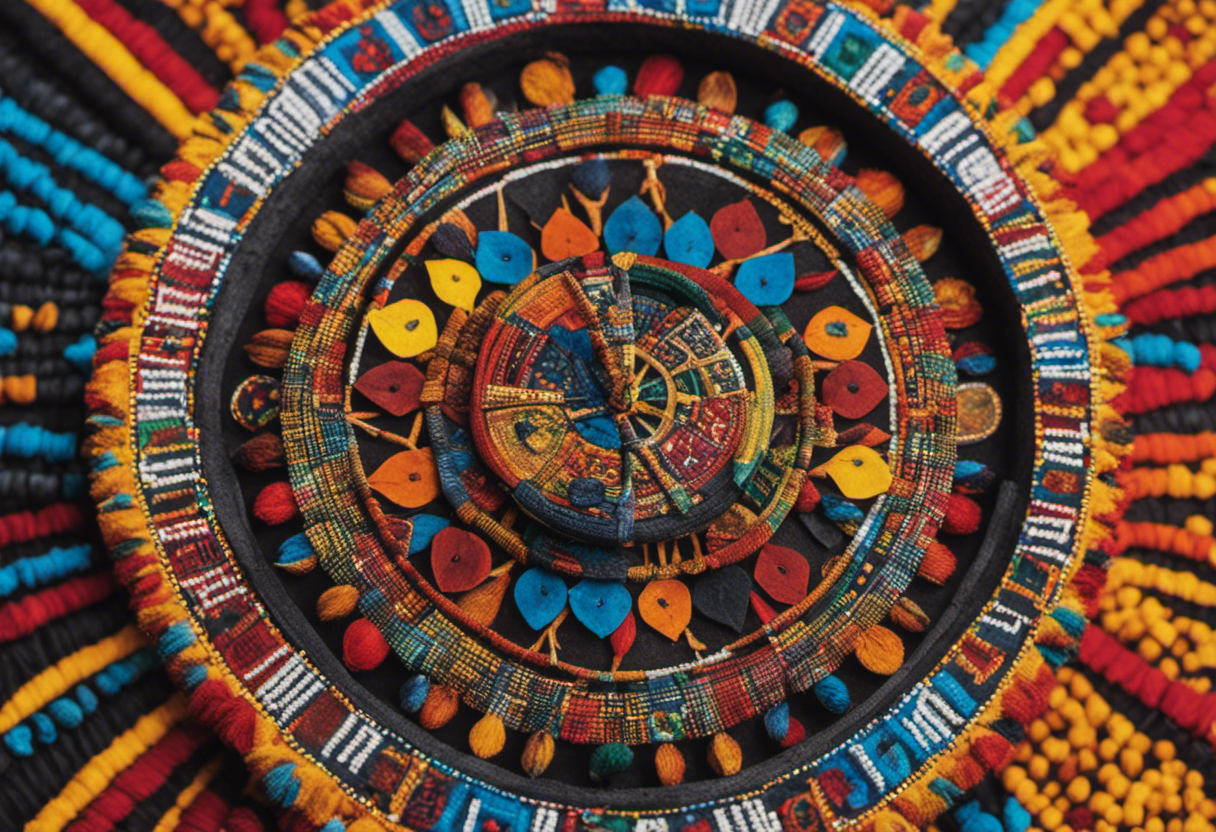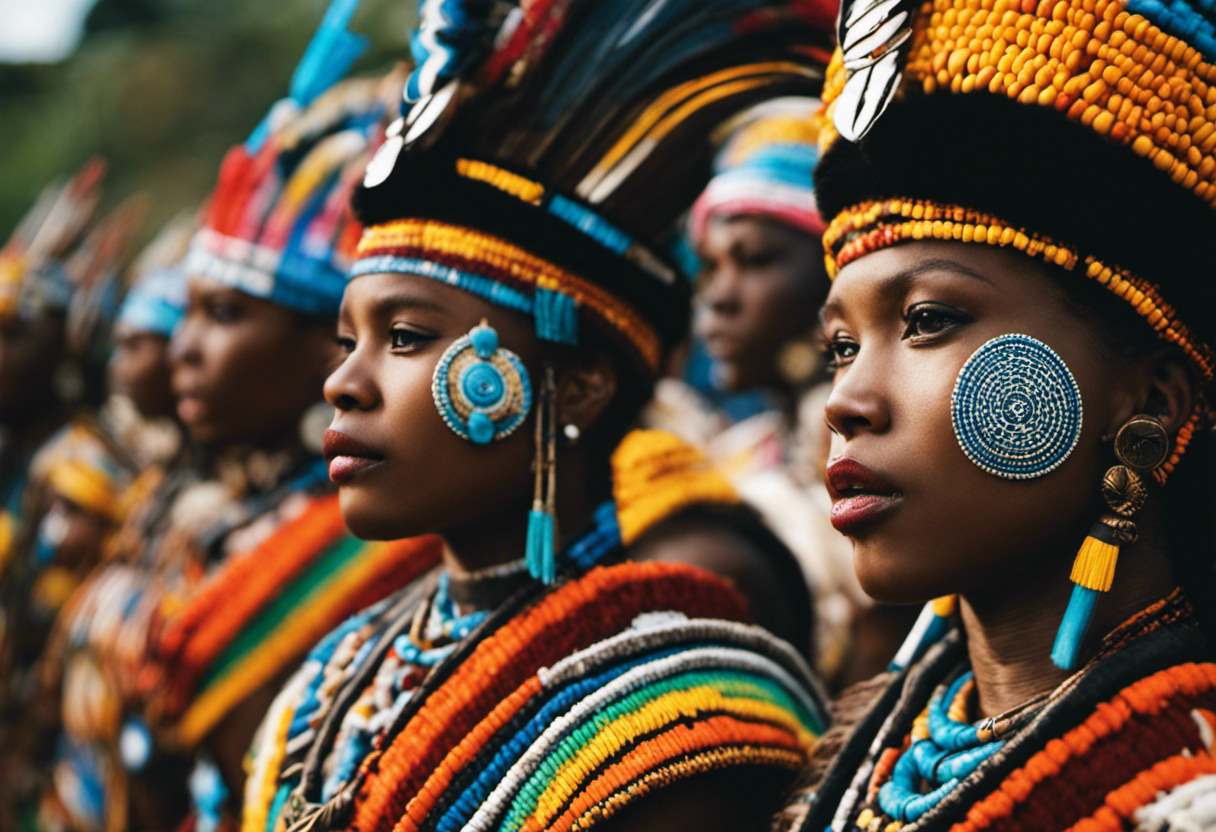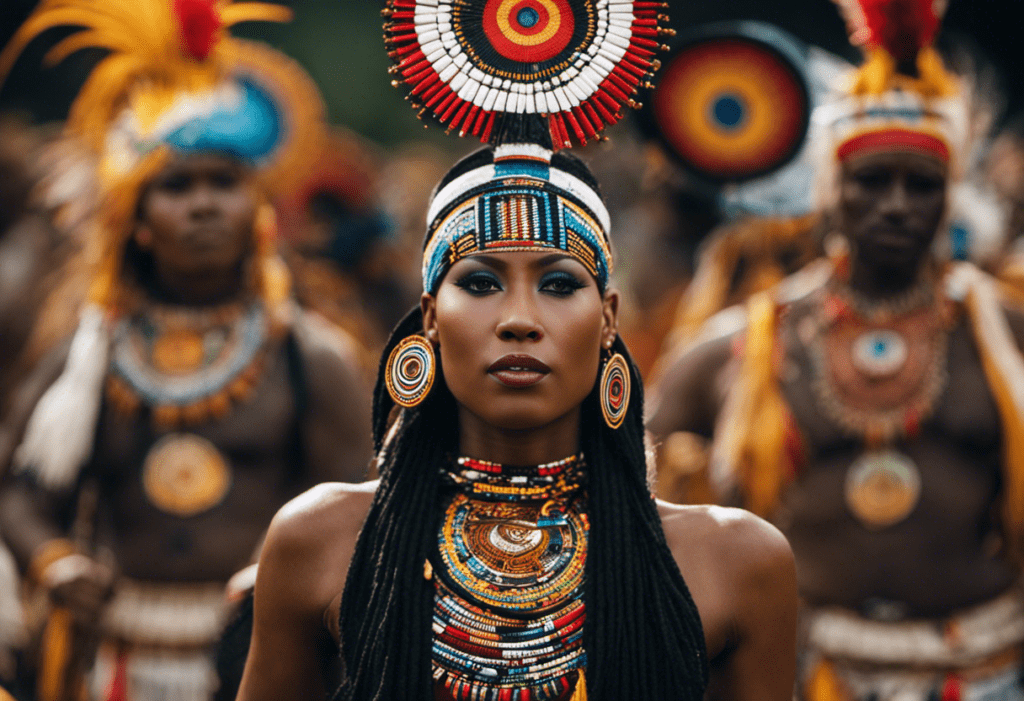According to recent studies, the Zulu calendar plays a significant role in the cultural practices of the Zulu people. However, its influence extends beyond its own community, intersecting with various other indigenous calendars worldwide.
This article aims to explore the connections between the Zulu calendar and other indigenous calendars, analyzing similarities and differences, lunar influences, and the significance of seasons.
By examining these intersections, we can gain a deeper understanding of the cultural interconnectedness and shared knowledge among indigenous cultures.
Key Takeaways
- Zulu calendar intersects with various other indigenous calendars worldwide
- There is cultural interconnectedness and shared knowledge among indigenous cultures
- There are similarities in lunar influences and agricultural practices among different indigenous calendars
- There are differences in specific calculations and cultural practices between the Zulu calendar and other indigenous calendars
The Role of the Zulu Calendar in Zulu Culture


The Role of the Zulu Calendar in Zulu Culture is of significant importance as it serves as a guiding force for various cultural practices and rituals.
The Zulu calendar, known as ‘isiZulu sokuqala,’ plays a crucial role in the lives of the Zulu people, providing a framework for their social, religious, and agricultural activities.
The Zulu calendar follows a lunar-based system, with each month beginning with the sighting of the new moon. This calendar consists of 12 months, each named after significant natural and agricultural events. The calendar not only marks the passage of time but also serves as a means of organizing and regulating the community’s activities.
One of the key roles of the Zulu calendar is to determine the appropriate time for important cultural events and ceremonies. For example, the calendar helps determine when to celebrate traditional festivals and ceremonies such as the annual reed dance or the first fruits ceremony. These events are deeply rooted in Zulu cultural traditions and are essential for maintaining social cohesion and cultural identity.
Furthermore, the calendar also guides agricultural practices, indicating the optimal times for planting, harvesting, and other farming activities. The Zulu people have a deep connection to the land, and the calendar helps ensure that they work in harmony with nature to ensure a successful harvest.
Indigenous Calendars: A Global Perspective


One important aspect of indigenous calendars is that they provide a unique perspective on the passage of time and the relationship between humans and nature. Indigenous calendars are not limited to a specific region or culture, but are found throughout the world, offering a global perspective on the measurement and understanding of time. These calendars are deeply rooted in the natural environment, with lunar influences playing a significant role in many indigenous cultures.
In various indigenous communities, the lunar cycle serves as a guide for agricultural practices, religious ceremonies, and social events. The phases of the moon are closely observed, marking the passage of time and influencing the activities and rituals of the community. For example, in the Maori calendar of New Zealand, the lunar cycle is divided into 30 phases, each representing a specific time for planting or harvesting crops.
Indigenous calendars are also closely linked to celestial events, such as the solstices and equinoxes, which mark the changing seasons. These events are significant for agricultural communities as they determine the appropriate time for planting, harvesting, and other agricultural activities.
Furthermore, indigenous calendars often incorporate the observation of natural phenomena, such as the migration patterns of animals or the blooming of certain plants. These observations not only provide a practical understanding of the environment but also reflect the deep spiritual and cultural connections that indigenous communities have with the natural world.
Similarities and Differences Between Zulu and Mayan Calendars


An examination of the Zulu and Mayan calendars reveals striking similarities and noteworthy differences in their methods of timekeeping and cultural significance. Both calendars are based on astronomical observations and have complex systems for tracking time, but they differ in their specific calculations and cultural practices associated with the calendars.
One similarity between the Zulu and Mayan calendars is their use of a solar year as the basis for measuring time. Both calendars divide the year into specific periods, with the Zulu calendar consisting of 12 lunar months and the Mayan calendar consisting of 18 ‘months’ called uinals. Additionally, both calendars incorporate intercalary days or months to account for the misalignment between the solar and lunar cycles.
However, there are also notable differences between the two calendars. The Zulu calendar is primarily lunar-based, with each month beginning at the new moon. In contrast, the Mayan calendar combines both lunar and solar cycles, with each uinal corresponding to a specific phase of the moon and each ‘year’ consisting of 360 days. The Mayan calendar also includes a separate system for tracking longer periods of time, such as the baktun, which spans over 394 years.
Furthermore, the cultural significance of the calendars differs. The Zulu calendar is deeply intertwined with Zulu culture and is used to determine important events and rituals. In contrast, the Mayan calendar played a central role in Mayan society, influencing agricultural practices, religious ceremonies, and political decisions.
Uncovering the Connections: Zulu and Native American Calendars


The connections between the Zulu and Native American calendars can be explored through shared celestial influences, cultural significance, and symbolism.
Both calendars are deeply influenced by the movements of celestial bodies such as the sun, moon, and stars, and use these observations to mark important events and seasons.
Additionally, the calendars hold significant cultural and symbolic meanings within their respective communities, serving as a way to preserve and transmit ancestral knowledge and traditions.
Shared Celestial Influences
Significantly, the Zulu and Native American calendars demonstrate shared celestial influences that offer intriguing insights into the interconnectedness of indigenous cultures.
Both calendars rely on celestial alignments to mark important dates and events. For example, the Zulu calendar, known as the ‘Isizulu calendar,’ incorporates celestial events such as the rising and setting of certain stars, the appearance of specific constellations, and the position of the sun and moon.
Similarly, many Native American tribes also base their calendars on celestial observations, such as the movement of the stars and the phases of the moon. These shared celestial influences highlight the importance of the sky as a cultural and spiritual reference point for indigenous communities.
The cultural interpretations of celestial events provide a lens through which we can better understand the connections between the Zulu and Native American calendars.
Cultural Significance and Symbolism
By examining the cultural significance and symbolism of the Zulu and Native American calendars, we can uncover the deep connections and shared values between these indigenous cultures. Both calendars hold immense cultural importance and are deeply intertwined with the cultural practices and traditional rituals of their respective communities.
For the Zulu people, their calendar is closely linked to their agricultural practices and the cycles of nature. It plays a crucial role in determining the timing of planting, harvesting, and other agricultural activities. Additionally, the Zulu calendar is also used to mark important cultural events and ceremonies, such as weddings, initiations, and ancestral rituals. These cultural practices and rituals are deeply rooted in the Zulu calendar and serve as a way to honor their ancestors and connect with their cultural heritage.
Similarly, Native American calendars also hold great cultural significance and are tied to traditional rituals and practices. Native American calendars often revolve around celestial events, such as the solstices and equinoxes, which are seen as sacred moments of transition and renewal. These calendars not only help guide daily activities but also inform the timing of important ceremonies and rituals, such as powwows and harvest festivals. Through these cultural practices and traditional rituals, Native American communities maintain a strong connection to their ancestors, land, and spiritual beliefs.
Exploring the Lunar Influences in Zulu and Chinese Calendars


As we delve into the intricate workings of the Zulu and Chinese calendars, we must explore the fascinating lunar influences that shape their respective systems. Both calendars rely heavily on the moon’s cycles to determine the passage of time and the occurrence of important cultural events.
In the Zulu calendar, the lunar influences are evident in the way months are calculated. The Zulu calendar is based on a 30-day lunar cycle, with each month beginning with the sighting of the new moon. This connection to the lunar phases reflects the cultural significance of the moon in Zulu traditions, where it is seen as a symbol of fertility, growth, and renewal.
Similarly, the Chinese calendar also incorporates lunar influences in its calculations. The Chinese calendar follows a 12-year cycle, with each year associated with a specific animal sign. This cycle is based on the moon’s phases, with the new year beginning on the second new moon after the winter solstice. The lunar connection in the Chinese calendar reflects the cultural connections between the moon and astrology in Chinese culture, where the moon is believed to influence human behavior and destiny.
The Significance of Seasons in Zulu and Aboriginal Calendars


Understanding the cyclical nature of the seasons and their influence on the Zulu and Aboriginal calendars provides valuable insights into the cultural significance and agricultural practices of these indigenous communities. The significance of seasons in both the Zulu and Aboriginal calendars goes beyond merely tracking the passage of time; it is deeply rooted in the cultural symbolism and traditions of these communities.
In the Zulu calendar, for example, the changing seasons mark important milestones in the agricultural calendar. The onset of the rainy season, known as the ‘First Fruits Ceremony,’ is a time of celebration and gratitude for the abundance of the land. It is a time when the community comes together to offer thanks and to honor the ancestors for their guidance and protection. Similarly, in the Aboriginal calendar, the changing seasons are seen as a reflection of the natural world and its interconnectedness with all living beings. Each season holds its own unique significance and is celebrated through ceremonies, rituals, and storytelling.
The cultural symbolism attached to the seasons in both calendars reinforces the deep connection between the indigenous communities and their environment. It serves as a reminder of the importance of sustainable practices and the need to live in harmony with nature. The seasons also play a role in guiding agricultural practices, such as planting, harvesting, and hunting, ensuring the community’s survival and well-being.
Zulu Calendar Traditions and Their Influence on Other Indigenous Cultures


Zulu calendar traditions have had a significant influence on other indigenous cultures around the world. Through cross-cultural calendar exchanges, the Zulu calendar has been adapted and incorporated into various indigenous communities, creating global connections among indigenous peoples.
These exchanges have not only impacted the way other cultures track time and observe seasons, but they have also fostered a deeper understanding and appreciation of indigenous knowledge systems and cultural practices.
Cross-Cultural Calendar Exchanges
Frequently, indigenous cultures around the world have been influenced by the rich traditions of the Zulu calendar, resulting in cross-cultural calendar exchanges. These exchanges have taken place on a global scale, with indigenous communities from different regions embracing aspects of the Zulu calendar in their own traditions.
This global perspective highlights the significance of the Zulu calendar and its impact on diverse cultures. The exchange of calendar practices allows for the sharing of knowledge and the preservation of cultural heritage. For example, some indigenous cultures have adopted the Zulu calendar’s lunar-based system, incorporating it into their own calendar systems.
This cross-cultural exchange not only enriches the traditions of these indigenous cultures but also fosters a sense of unity and interconnectedness among diverse communities. The Zulu calendar’s influence on other indigenous cultures serves as a testament to the enduring legacy of indigenous knowledge and the power of cultural exchange.
Zulu Calendar Adaptations
Indigenous communities worldwide have been profoundly influenced by the rich traditions of the Zulu calendar, leading to adaptations and the integration of Zulu calendar practices into their own cultural customs.
The Zulu calendar, with its unique system of tracking time and observing significant events, holds immense cultural significance and symbolism.
The adaptations of the Zulu calendar by other indigenous cultures reflect a recognition of its value and a desire to incorporate its traditions into their own ways of life. These adaptations may involve the adoption of specific calendar rituals or the incorporation of Zulu calendar symbols into indigenous art and storytelling.
The cultural significance of these adaptations lies in the preservation and celebration of indigenous heritage, as well as the promotion of intercultural exchange and understanding.
The Zulu calendar’s influence on other indigenous cultures serves as a testament to its enduring legacy and universal appeal.
Global Indigenous Calendar Connections
The rich traditions of the Zulu calendar have fostered global indigenous calendar connections, as various cultures have been influenced by and incorporated elements of the Zulu calendar into their own cultural practices. One of the key factors contributing to these connections is the shared celestial influences that are observed by different indigenous cultures around the world.
The Zulu calendar, like many other indigenous calendars, is closely tied to the movements of celestial bodies such as the sun, moon, and stars. This connection to the celestial realm creates a universal language that allows different cultures to find common ground in their calendar systems.
As a result, indigenous cultures from different regions have been able to learn from and adapt the Zulu calendar traditions to their own cultural contexts, further strengthening the global indigenous calendar connections.
Conclusion
In examining the intersection of the Zulu calendar with other indigenous calendars, it becomes evident that despite geographical and cultural differences, there are intriguing similarities and connections among these ancient systems.
The Zulu calendar holds a significant role in Zulu culture, and its influence can be seen in various indigenous calendars worldwide. For example, the Zulu and Mayan calendars share similarities in their approach to timekeeping.
Additionally, the lunar influences in the Zulu and Chinese calendars suggest a universal recognition of the moon’s significance.
These connections emphasize the rich and interconnected nature of indigenous cultures and their calendars.




